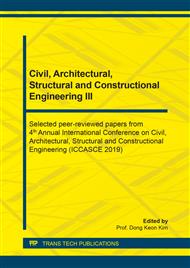[1]
S. K. Chinata, P. D. Gujar, Significance of moisture management for high performance textile fabrics, Int. J. Innov. Res. Sci. Eng. Technol. 3(2) (2013) 814-819.
Google Scholar
[2]
B. Mayur, C. Mrinal, M. Saptarshi, R. Adivarekar, Moisture management properties of textiles and its evaluation, Curr. Trends Fashion Technol. Text. Eng. 3(3) (2018) 50-55.
Google Scholar
[3]
B. Das, A. Das, V. Kothari, R. Fanguiero, M. Araújo, Moisture transmission through textiles, Part I: Processes involved in moisture transmission and the factors at play, AUTEX Res. J. 7(2) (2007) 100-110.
Google Scholar
[4]
R. S. Rengasamy, Improving moisture management in apparel, Improving comfort cloth. (2011) 182-215.
DOI: 10.1533/9780857090645.2.182
Google Scholar
[5]
J. Dargahi, S. Najarian, Human tactile perception as a standard for artificial tactile sensing – a review, Int. J. Med. Robot. Comp. 1(1) (2004) 23-35.
DOI: 10.1002/rcs.3
Google Scholar
[6]
W. Y. Wang, K. T. Hui, C. W. Kan, K. Buntorn, K. Manarungwit, K. Pholam, R. Mongkholrattanasit, Examining moisture management property of socks, Key Eng. Mater. 805 (2019) 82-87.
DOI: 10.4028/www.scientific.net/kem.805.82
Google Scholar
[7]
C. W. Kan, C. M. C. Ko, N. Rungruangkitkrai, N. Vuthiganond, R. Mongkholrattanasit, Examining the overall moisture management capability of fabric-foam-fabric plied material, Solid State Phenom. 279 (2018) 109-112.
DOI: 10.4028/www.scientific.net/ssp.279.109
Google Scholar
[8]
C. W. Kan, Y. L. Lam, A study of the moisture management treatment on the ultraviolet protection effect of cotton knitted fabrics, J. Sci. Res. Rep. 5(3) (2015) 248-251.
DOI: 10.9734/jsrr/2015/13947
Google Scholar
[9]
Y. Li, Q. Y. Zhu, K. W. Yeung, Influence of thickness and porosity on coupled heat and liquid moisture transfer in porous textiles, Text. Res. J. 72(5) (2002) 435-446.
DOI: 10.1177/004051750207200511
Google Scholar


